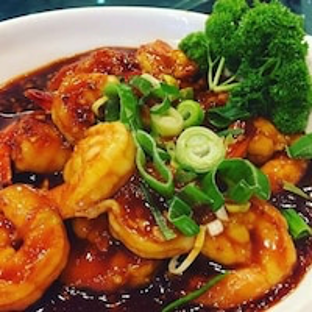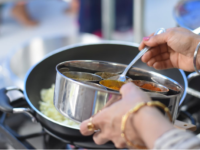Culinary Curiosity: Carrying the legacy of the Peranakans
The emergence of the Peranakans or Nonyas as a distinct community with their unique dialect, dress and food appears in historical records sometime in the 15th century when large numbers of Chinese men migrated from south China and settled in the Malayan archipelago, taking local wives. The evolution of this community is a story of survival, assimilation and adaptation. Growing rich through mining, trade in spices, opium and commodities, they built working relationships with people from vastly different economic and cultural backgrounds. The Peranakans’ long association with this region and ease with the Malay language meant they were a great asset in royal courts and as middlemen between the colonial powers, the Dutch, Portuguese and British and the local communities. These complex historical associations were to have an immense impact on their cuisine.
What distinguishes the Peranakan cuisine from that of mainland China is the liberal use of flavourful local ingredients like coconut milk, galangal, pandan, laksa leaves, kaffir lime, tamarind and cincalok, a heady spice blend of salt fish, lime and spices and marrying them with Chinese pantry staples like black mushrooms, soybeans and noodles. The Nonyas embraced local fruits and vegetables like young jackfruit, sweet potato leaves and banana flower into their diet and gave a new twist to Malay favourites like Assam Fish and Beef Rendang, a traditional Minangkabau spicy meat stew.
Peranakan specialities can take many hours to prepare and some favourites include Otak Otak, minced fish and herbs wrapped in banana leaf and grilled, Ayam Buah Keluak, a meat stew cooked with nuts from a mangrove tree; Ngo Hiang, a spiced meatball made from minced pork and water chestnuts, wrapped in soya bean sheets and deep fried; and Itek Tim, a duck stew with salted vegetables, tomatoes, green peppers and preserved sour plums. The Nonya kuehs or cakes are extremely popular even today. They are often sticky and colourful with fillings made from local coconuts and Gula Melaka.
The hub of major Peranakan settlements were the port cities of Penang, Melaka and Singapore. The southern cities of Singapore and Melaka show definite Indonesian influences with liberal use of coconut milk and Malay spices like coriander and cumin, whereas Penang’s proximity to Thailand meant a preference for tamarind and other sour ingredients. The classic Laksa for example is a sour Asam Laksa in Penang but a creamier coconut infused version in Singapore.
The 1980s has shown a growing interest in the quickly disappearing Peranakan way of life and its food. Migration, globalisation and a “Peranakan Revival” has managed to revive this cuisine from oblivion by taking it out from its tightly held portals in the home kitchens to the world culinary stage.
John Lim of Bunga Raya, who runs the highly successful restaurant with his wife, Rita, speaks of how he left Penang in the 1980s to escape an ongoing recession. It was, however, only in the late ’90s when his mother, Susan, a chef came to live in Auckland that the idea of a restaurant was born. Both Susan and her mother were Nonya, so their first venture in Otahuhu served a purely Peranankan fare. 35 years on, Bunga Raya still serves Penang Nonya food like the Assam curries, Laksa, Kapitan and XO sauce infused dishes. Susan, in her 80s now has retired, but as John says, “she has trained several generations of chefs in the restaurant, so her legacy lives on in every dish that goes out to the tables”.
To get a taste of the Peranakan delicacies, visit Bunga Raya restaurant:
2a/3062 Great North Road, New Lynn, Auckland 0600
Telephone: 09-827 8666













